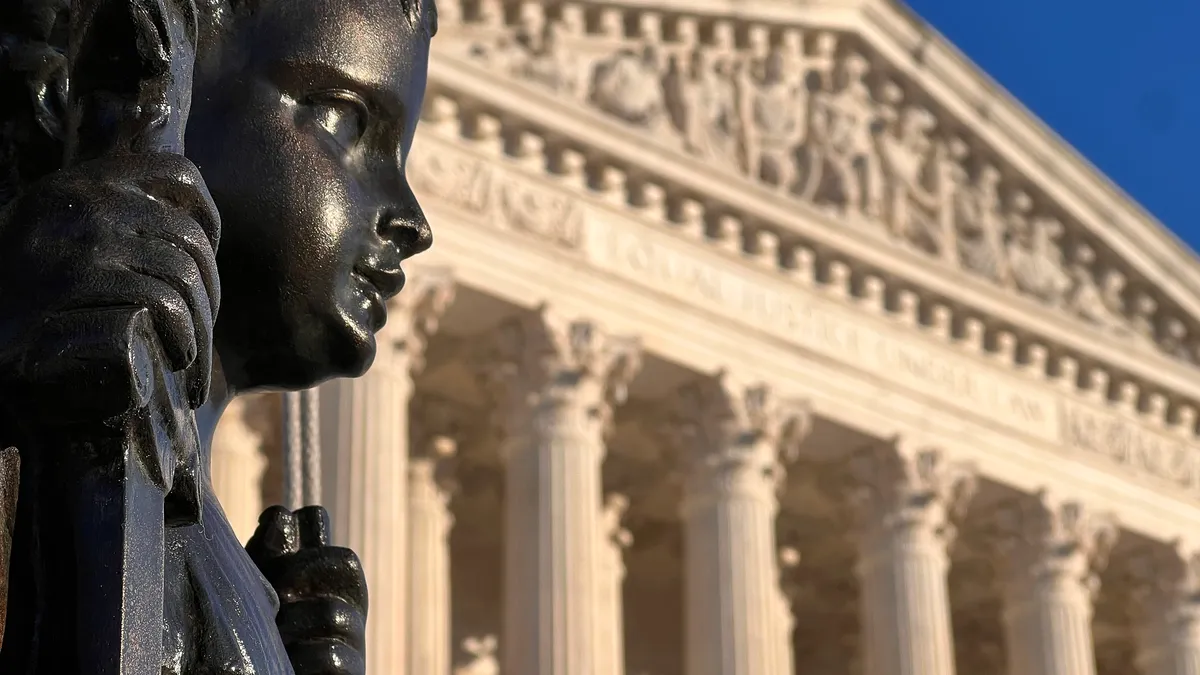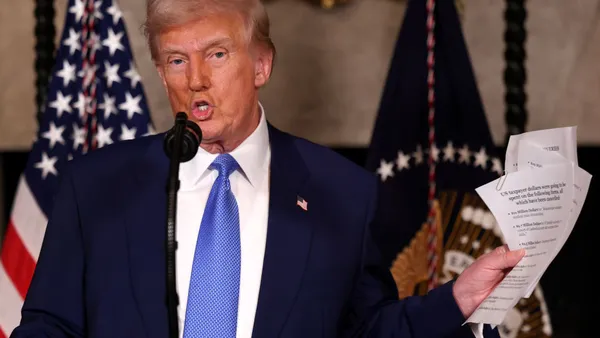Dive Brief:
- Justices of the U.S. Supreme Court heard more than three hours of arguments this week over whether the so-called Chevron Doctrine should remain one of the major pillars governing federal administrative law.
- The doctrine stems from a 1984 case in which the court ruled that, as long as an agency’s interpretation is reasonable, deference should be given to it whenever a statutory provision is ambiguous and an interpretation is needed for the agency to do its job. The idea is that the agency, comprised of technical specialists, is better positioned than courts to resolve statutory ambiguities.
- Since that ruling, courts have cited the case some 17,000 times, making it one of the most influential decisions in recent jurisprudence, but critics say it gives too much power to agencies over matters that should be decided by courts.
Dive Insight:
The court heard arguments in two cases, both involving a rule by the National Marine Fisheries Service requiring companies to pay the costs of hosting federal agents on their boats to curb over-fishing.
In the law creating the program, Congress left it ambiguous whether the government or the companies should pay the cost of the monitors. The agency said it should be the companies.
In his line of questioning, Associate Justice Neil Gorsuch, whose mother was chief of the Environmental Protection Agency when the Chevron case — which involved her agency — was decided, suggested that courts are the proper place for resolving differing interpretations of an ambiguous statute.
Aside from deferring to agencies, he said, another approach is to “listen carefully to both sides and provide special weight … to a coequal branch of government’s views about the law … and that’s what a court would do.”
Having agencies decide is also a recipe for instability, he said. “Each new administration can come in and undo the work of the prior one … so you never have stability in the law. If reliance and stability count, I would have thought that Chevron, at least as this court has understood it, is a recipe for anti-reliance.”
Associate Justice Ketanji Brown Jackson said removing agency deference risks putting courts in a policymaking role since much of the ambiguities that agencies clear up are matters of policy, not law.
“I see Chevron doing the very important work of helping courts stay away from policymaking,” she said. “The way I’ve been thinking about Chevron, Congress has given that policy choice to the agencies.”
Analysts are looking to Chief Justice John Roberts and Associate Justice Amy Coney Barrett to play a middle-ground role as the court weighs a decision, expected by June.
In their questioning, the two justices appeared to look for an approach that would solve issues like the one represented by the two cases without having to give up Chevron altogether. Barrett, in particular, seemed concerned by the upheaval knocking down 40 years of precedent would cause.
“Maybe nothing happens immediately to [previously decided] cases but hasn’t the door been opened for litigants to come back?” she said.
Roberts noted that the Supreme Court hasn’t relied on the doctrine in years and asked questions suggesting the doctrine isn’t relied on that much anymore, at least by the Supreme Court.
“We get a lot of statutory interpretations from agencies, and for 14 or 16 years we haven’t relied on Chevron over that time,” he said. “Have we overruled it in practice even if we’ve left the lower courts to continue to grapple with it?”
“The fate of Chevron could turn on the votes of Chief Justice John G. Roberts Jr. and Justice Amy Coney Barrett, members of the court’s conservative wing whose questions were not uniformly hostile to the doctrine,” The New York Times said in its report on the arguments.
The cases are Relentless v. Department of Commerce and Loper Bright v. Raimondo.











